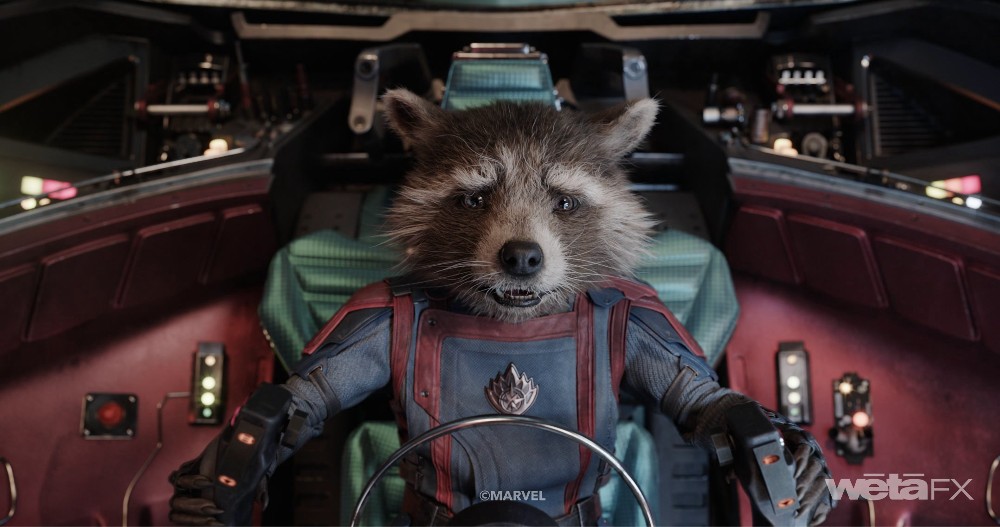
By now, you may have already seen James Gunn‘s Guardians of the Galaxy, Volume 3, the finale of his grand space opera trilogy for Marvel Studios, which kicked off the summer box office in May. If not, you still have a chance to see it now that it’s streaming on Disney+, and even in a smaller-screen format, it’s hard not to be impressed by the visual effects of Gunn and his VFX team, led by overall VFX Supe Stephane Ceretti.
One of the VFX houses involved with the last act of the movie is the venerable New Zealand-based Wētã FX, who have been front and center in the world of visual effects going back to 1993 when filmmaker Peter Jackson founded it with Richard Taylor and Jamie Selkirk for his early film, Heavenly Creatures. The company’s Oscar-winning work on films like The Lord of the Rings trilogy and James Cameron‘s two Avatar movies has kept Weta in the conversation whenever it comes to larger scale filmmaking that involves
As far as Guardians, Vol. 3, Guy Williams, a 25-year veteran of Weta, acted as VFX Supervisor for the show, with Michael Cozens as the film’s Animation Supervisor, taking on some of the movie’s bigger challenges such as the High Evolutionary’s ship, the Arête, which is filled with all sorts of imaginative but deadly creatures.
You may remember that Below the Line spoke with Ceretti back in May, but shortly after that, we spoke to Williams – a regular interview subject for us – and also to Cozens, in order to learn more about some of the key scenes in that last act of Gunn’s grand finale. We spoke about the amazing one-shot battle sequence in the halls of the Arête spaceship and sharing assets with the other VFX houses working on the show.
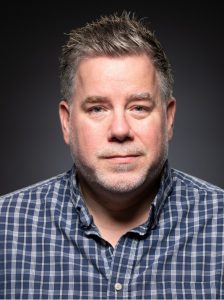
Below the Line: Guy, we spoke quite a bit last year about She-Hulk and Peacemaker. At What point did you get rolling on Guardians and were you still working with James on Peacemaker and The Suicide Squad?
Guy Williams: We work back-to-back with James, so every show ends with him saying, “See you on the next show.” It’s been very fortuitous for us. We’ve been lucky enough to be able to build a relationship with him, and more importantly, an understanding. He’s kind of a crazy guy, and we are that kind of crazy, too, so it’s like the crazy siblings that speak the same language almost. We got involved in the show late 2021. They started to approach us and talk specifics. [Visual Effects Producer] Susan Pickett and Stephan Ceretti started talking to us about the block of work that they were hoping we would be able to work on, started talking about numbers that we could try to figure out how many shots we could afford to take on. To their credit, kudos much very to Steph, he’s a very proactive thinker. Steph was eager to get assets turned over, eager to get involved in the process. He didn’t want to wait until after the shoot and do a typical show delivery. He wanted to get assets turned over at Christmas 2021, so that we can get right into the builds, so that we can make sure that we had the best possible chance of delivering the best possible film. We technically probably started real early in 2022, but we were having discussions and doing all sorts of planning in late 2021.
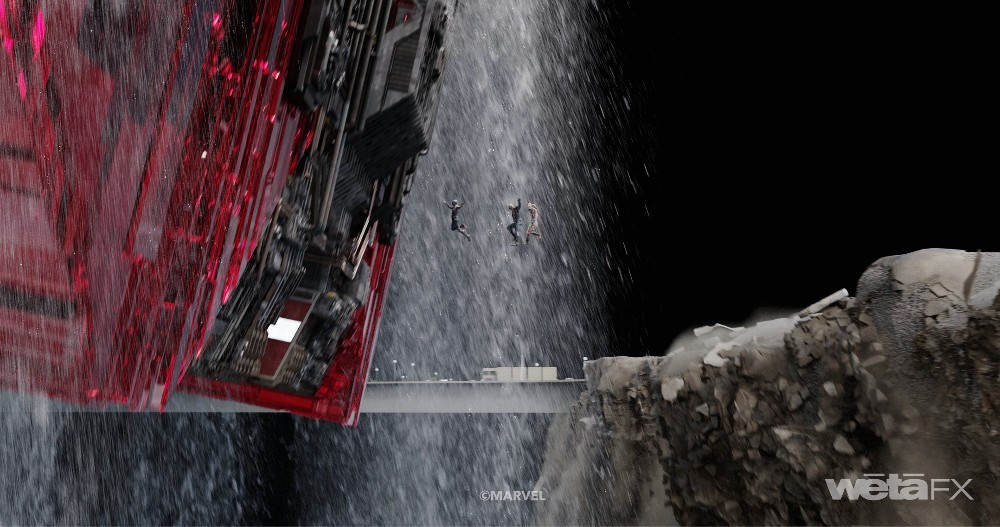
BTL: Obviously, the Arête plays a large part in the last act, so was a lot of that getting together with [Production Designer] Beth Mickle and figuring out what was involved with creating that first? Or was a lot of that done on their end before Weta came on?
Williams: There were probably about 10 pieces of artwork that we received of the Arête, which plays a large part in the last act, that defined the look of it. Gorgeous, gorgeous pieces of artwork, the majority of them centering around the Arête, plays a large part in the last act, when it’s sitting in the harbor, lifting up out of the harbor. Humorously, the majority of it centered around these massive Day the World Ended-style destruction shots of the Arête lifting up out of the harbor, peeling back the city with tidal waves rolling over the city. We started to get a little bit sweaty, and scared, because you’re looking at all these shots of just massive, massive, massive epic destruction. In the end, there were only one or two shots that really featured the destruction. Everything else was featuring the actors. So Beth and her team did an amazing job defining what the Arête was, and then, it was up to us to sort of fill in the gaps and deal with the more specific challenges, primarily which was scaling destruction.
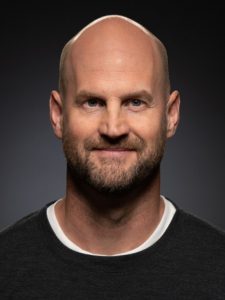
BTL: Michael, what were your first concerns on the animation side that you needed to develop before shooting started?
Michael Cozens: When we do big third act pieces, the scope is always very large, not only just because the shots are epic, but because you’ve got to make sure you can do the detailed emotional character performances, as well as blocking out big chunks of destruction work. It’s character performances, character choreography, inside a ship that’s exploding and understanding what James… there’s excellent previs work, but there are still a lot of questions open when you’re getting into post-production that need to be answered quickly, in order to build assets. Even some of the things with characters like Groot, who have all these different stages [and] forms that he takes, those things need to be answered early enough with James [and] what he’s looking for in terms of storytelling that we can build those things properly. Our approach is always to get a really strong post-vis blocking bash in front of him to define the choreography, the shot composition, if It’s a digital shot, and performance — answer those questions in order to do the final builds on those assets.
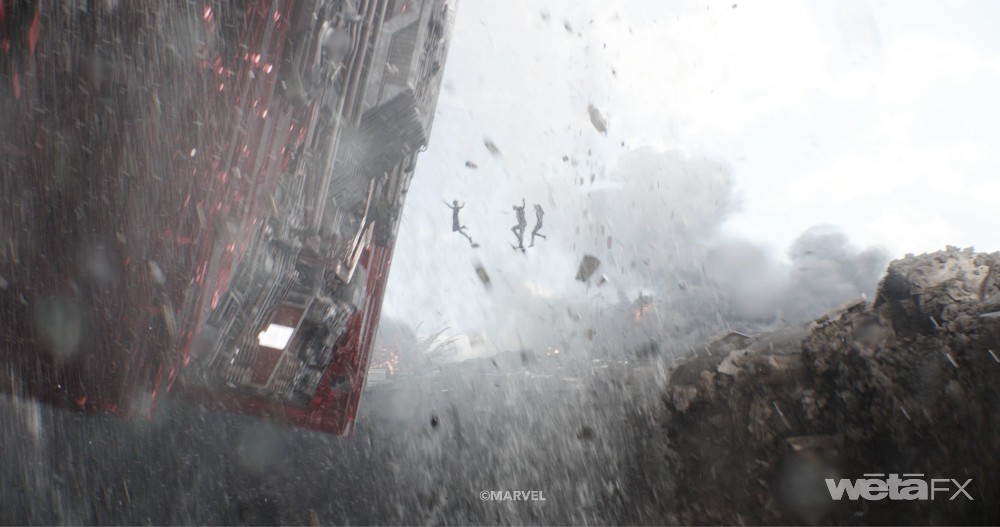
BTL: In terms of things like when the ship blows up, and Drax and Mantis are stuck outside the door, are they shooting plates on set, and you’re combining them with the ship you’re creating?
Cozens: Those are interesting shots, because the ship is moving very quickly, moving great distances, and we have to split the shot out into a local camera space where the action takes place and then have another camera for the fast motion of the ship, in order to composite those two things, so we’re not dealing with characters that are moving insanely fast through space, and then really fine-tuning performances on something that’s moving hundreds of kilometers an hour. There are just a bunch of approaches to simplify some of the challenges with the complex work in a show like this.
BTL: On the design of the Arête, is Weta creating the exteriors and some of the interiors as visual effects assets or mainly focusing on exteriors?
Williams: We did some of the interiors like the command deck, fight hall, and we did the spaceport. There were a few scenes done at Framestore with the command deck, and we generated the asset delivered it to him, but the one main scene we did on the command deck was when Quill and Groot go in there, and it’s not a trap, it’s a standoff. The whole “Octo-Groot” fight, if you will. We had to build the asset, because we also had to destroy the asset. The whole roof collapses, and it turns into a totally different asset.
BTL: Was some of that command deck built on set, too?
Williams: Again, there was a beautiful set build, which gave us something really excellent to match. It took us a while to figure out how they did it, because, obviously, they didn’t build it out of silver and suby. They came up with an interesting approach, which is something akin to aluminum or tin that’s stamped into the cube shapes and then clad in two layers of red plastic of some sort, so it looks kind of like glass. But it screwed with us, because we had spent all that time developing the outside of the ship using actual glass, and then when we tried using those shaders inside, we could never make the cubes look even remotely the same. For the inside shots, it’s a totally different paradigm. We built silver cubes with red plastic on top to be able to match. We ended up replacing a significant portion of the set, not from egotistical desire but primarily from … trying to figure out the best way to say this… especially when it comes to something that’s reflective and refractive, you’re never gonna be able to match it if it isn’t built exactly the same way as the final result.
In other words, the set has an open roof, which allows a lot of light to come down into the set, which causes all the cubes in that area to be lit wrong if you put a roof cap on top. It’s impossible to light your extension to have that same cheat, because it’s blocking the same light. We ended up having to feather our extension down further. But there are a lot of shots where if you don’t see very much of the extension, we’re able to make it match and either just top it up. Hell, there are some shots in there that probably don’t even have an extension in there, just because they’re close enough to the live action set. It held up incredibly well.
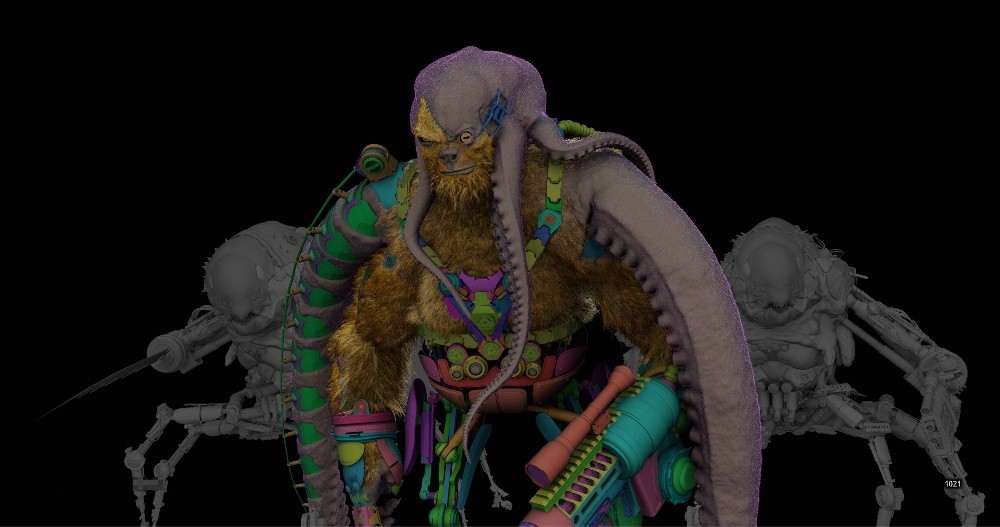
BTL: Was Weta also involved with the weird creatures that attack Nowhere when it shows up in the last act?
Williams: Yes, the crustaceans. In essence, the story point is that [the High Evolutionary] has built a new race of creatures, he’s going to populate a new planet. The Crustaceans are built as this sort of Stormtrooper-esque army to defend the planet if it ever needs it. He decants the batch and sends it out into space to tackle the Nowhere problem. It’s this really fun creature. It’s not like the Hellspawn that Evo creates, where he’s experimenting with new approaches to life to see if he could find the perfect race.
The idea being that some of them are from failed experiments, and he just cuts them up and puts machinery on them. Others are built just to be machines. So Octo-hyena, Behemoth, Warpig and the Crustaceans are all Hellspawn, so we did the scene where Octohyena is summoned from what we call the barracks, that big red tube full of sleeping pads on the walls that then open up revealing the Crustaceans. Pretty much every shot with a Crustacean in it. I think we did all the Behemoth shots, and we did all the Octo-hyena shots, and we did a handful of the Warpig shots. Sony did a lot of Warpig shots. No, Behemoth was done by ILM for one of the spaceport scenes. We did the whole scene of the Crustaceans, waking up, exiting the Arête, fighting in deep space against the Guardians, but then also peeling off and going to Nowhere. We did all that scene inside of Nowhere where the crustaceans basically lay waste to the just recently-refurbished Nowhere after Thanos tore the place up, the Crustaceans come along and do the same, but Craglin and Cosmo intervene and stop the attack.
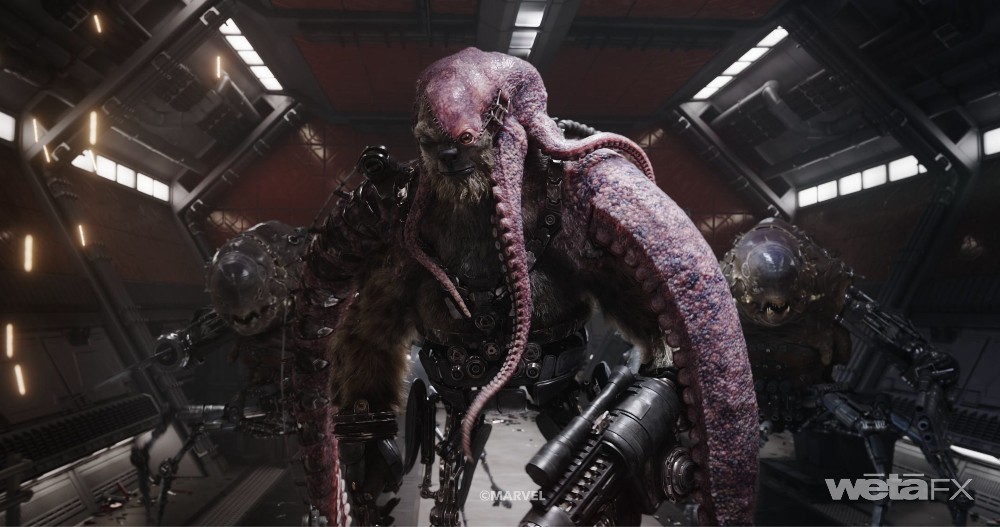
BTL: Mike, was the outer space stuff the most complex scenes for your animation department to do or was it a combination of that and the one-shot fight sequence?
Cozens: Look, there were a few tricky shots out in space where we needed to restage and re-compose the shot and the choreography. There’s a shot as they approach the Arête, and they’re flying through a debris field. There’s a pretty big shot that we did some very specific timings to feature each of the characters and ships, and then obviously, the big single shot was probably the most complex bit of work that we had to tackle.
BTL: I remember there was a similarly impressive shot in Peacemaker, a big fight sequence. This might be more so only because I saw it in IMAX twice vs. watching it on my computer or TV set.
Cozens: Yeah, there’s a lot going on in that single shot. Each character has got their own moment and the choreography is all done to the rhythm of the track and just getting the timing sorted inside a slightly fluid edit to the music with a bunch of read times and things was quite a beast to handle.
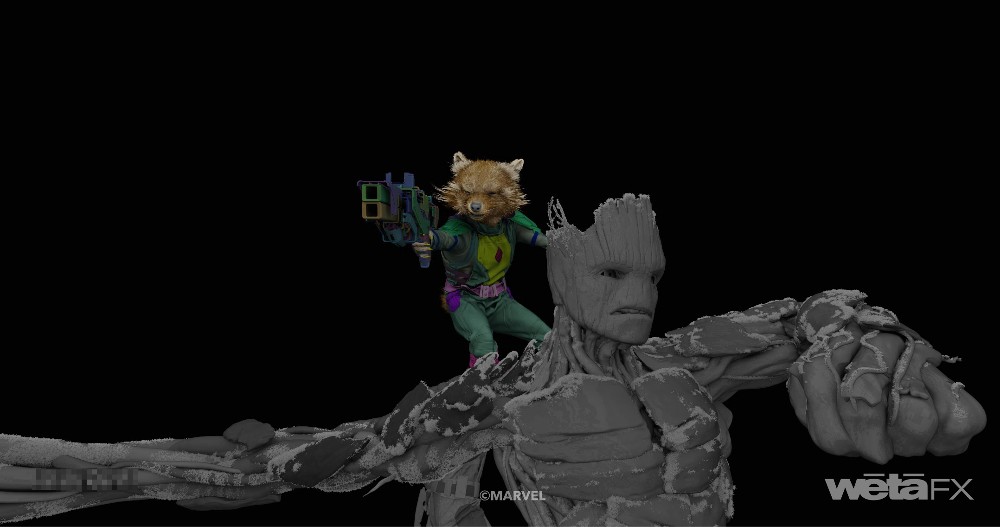
BTL: What are you getting for plates for that sequence? Are all the characters being shot individually and seperately and then you comp it all together?
Cozens: No, it was 17 or 18 takes, and then working with those takes to stitch and add all the character work inside them. The work done by Steph on-set and Wayne [Dalglish], the stunt coordinator, just to get the pieces and the choreography working and the cameras close to one another was excellent. We still had some very tricky stitches to do where Quill would be right in camera or Mantis would be in the middle of the stunt, and we would cut, so we had to move seamlessly from live action through digi-doubles back into live action. Again, just with the read times, it was a complex beat.
Williams: Just to interject, there was no bespoke blue screen shot. There were no insert pieces shot. It was all shot in the hall as 18 individual cuts that had a little bit of overlap with action. They would shoot a shot for a little bit of time, and once they’re happy with it, they would be able to move on and set up the next shot. They would eyeball trying to figure out where the last position was, so that it has a seam they would try to make work as good as possible. But I mean, nobody’s standing still, nobody’s moving sedately, everything’s moving very fast, so it’s impossible to get a hallful of people to lineup exactly right. Mike and his teams did an amazing job of keeping as much as possible, and then figuring out where we had to hide the seams. Some places are obvious. Nebula is very easy to turn into a digidouble, just because of her prosthetics. and also because the action she has to do in the middle of a scene can’t be done by a stunt person.
There’s an entire vignette with her completely digital, but as Mike alluded to, there’s a point where Mantis jumps on a guy’s shoulders and flips him back into Groot. Because the way the wire work worked, they shot it in two parts. One part she had to do the swing up onto the shoulders and another part, that guy then had to be on wire so he could go flying backwards. There’s a cut in the middle there, and the hands, their arms, everything about the shot changes, but they’re both full frame. You’re seeing the guy from the chest up and her from her chin down, so It’s very demanding, but we just replaced it all with digi-doubles at that point. That’s how we solved a lot of the problems in the scene, that and the fact that a lot of the creatures are digital, such as the Crustaceans, Groot, Rocket, and they helped us add some stitches as well.
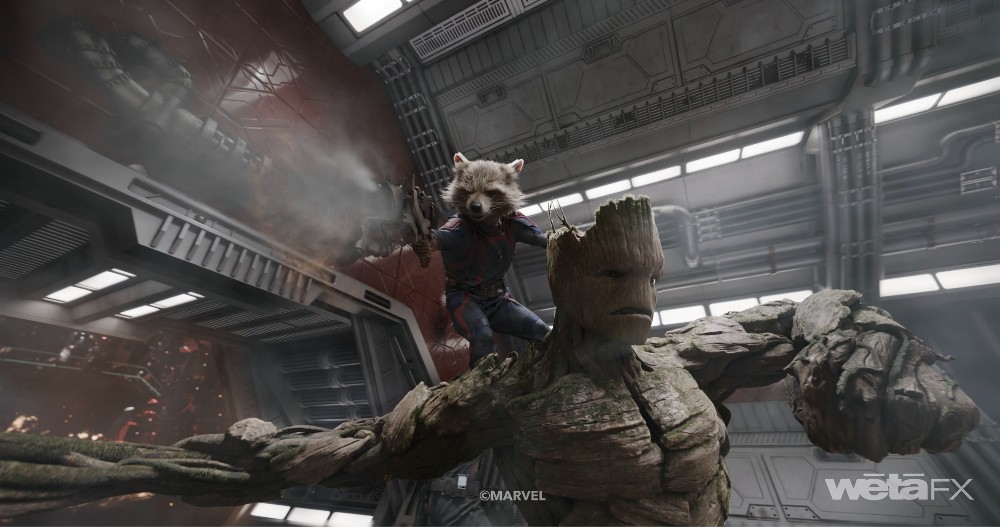
BTL: I know Weta doesn’t do performance capture that much, but did each of the characters have someone on set, like a stunt person, representing them that you had to replace?
Cozens: I think both Steph and James want to see a representation of what they’re chasing inside the plate. For the most part, yes. There were sections of the hall fight, like when Rocket is running along Groot’s arm, for example, and jumping up into the air, that stuff, you just have to start blocking and figuring out. It depends on the complexity of the shot.
BTL: Steph also mentioned that James also did a lot of Groot’s dancing at the end, so were you involved with that big end dancing sequence?
Williams: We did a few shots in that scene with the Abilisks, but the big celebration was done, I think, at Framestore. We missed out on the opportunity to match James’s dance, but on previous projects, James is a very giving director, he doesn’t hold back, which is awesome. He’ll give himself at all times, which makes for great reference, great performance guidance.
Cozens: Yeah, every call, he’s out of his chair and performing and showing us what he’s looking for out of a performance, which is just excellent. He just gives a very clear direction to the artists, the animators.
Williams: It’s excellent that James really knows what he wants. In other words, it’s not like he’s, “I don’t know, Groot’s doing something here. He’s doing this really cool dance. Wait a second…” and then he tilts the camera around, stands up and starts performing it. He thinks of visual effects as an extension of acting, so he directs the visual effects very much like he would work with an actor. It’s pretty brilliant in that regard.
BTL: I think Steph mentioned that James worked with animators as he does with actors. Did you find that as well, Mike?
Cozens: Oh, yeah. Again, he has a very clear vision of what he’s chasing. and he’s happy to walk you through the staging of that, and the performance ideas. Translating that on our end is smooth and sometimes more complex and tricky, but just excellent to work with, in terms of clear vision. He’s just got an incredibly sharp mind for storytelling, filmmaking and performance.
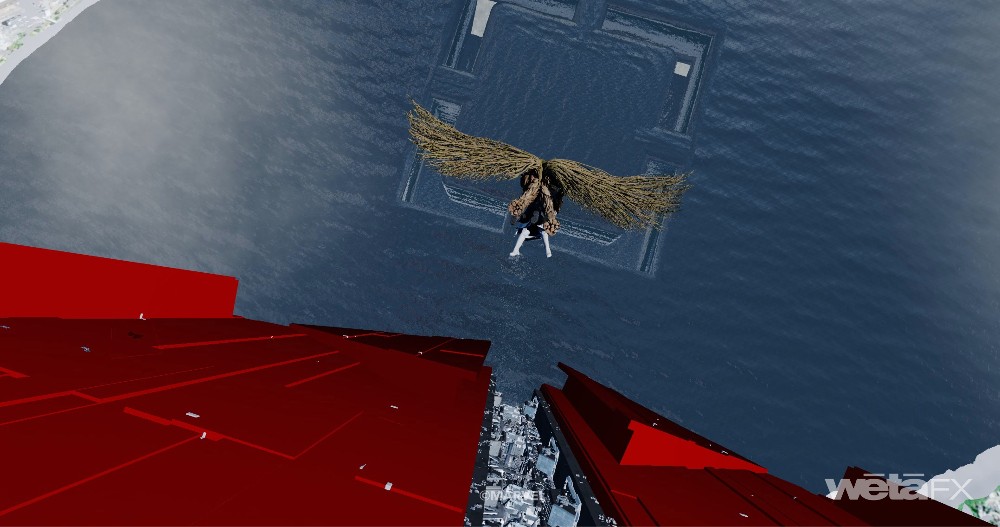
BTL: I’m glad you mentioned the Abilisks, because I was curious about them. When they first appeared, I thought they might give me nightmares, since they were quite scary. What kind of direction did you get for those creatures?
Cozens: [James] wanted that to feel like a horror movie. When it’s only Nebula and her flashlight, scanning around, it’s quite a frightening little moment in there. We’ve got some tools over here. We’ve got a real-time renderer called Gazebo that we can light animation work at the animation blocking stage, in order to stage character reveals with light. That pipes from animation into lighting, or vice versa. That helps us stage those moments, and then, with such big creatures that needed to move explosively, we always go back to life. A lot of the motion studies for those characters were based on big walruses, and then you start figuring out how the tentacles work, because they needed to move very quickly. Yeah, quite a frightening little moment there when they’re lost in the darkness and the Abelisks show up.
BTL: I want to go back to the outer space battles, because in those cases, there probably isn’t much in terms of plates from set?
Cozens: Sometimes there’ll be previs. Sometimes we need to visualize the shot, and when it’s an all-CG shot and there’s either vis or a slug card describing the shot, we’ve gotta quickly get into the blocking and staging of the shot, just to make sure we’re capturing the beats. James really like to see his characters. The whole film is very character-driven, and it’s really important in even in the thick of a space battle to the story for the story to be showing what the characters are going through. Staging shots and composing shots is a really key part of the build of those things that we like to get in front of early. Also, just keeping the whole thing moving and exciting. We have a very strong previs team over here. I’m just always very thankful to have guys that can compose and art direct shots to make them look excellent.
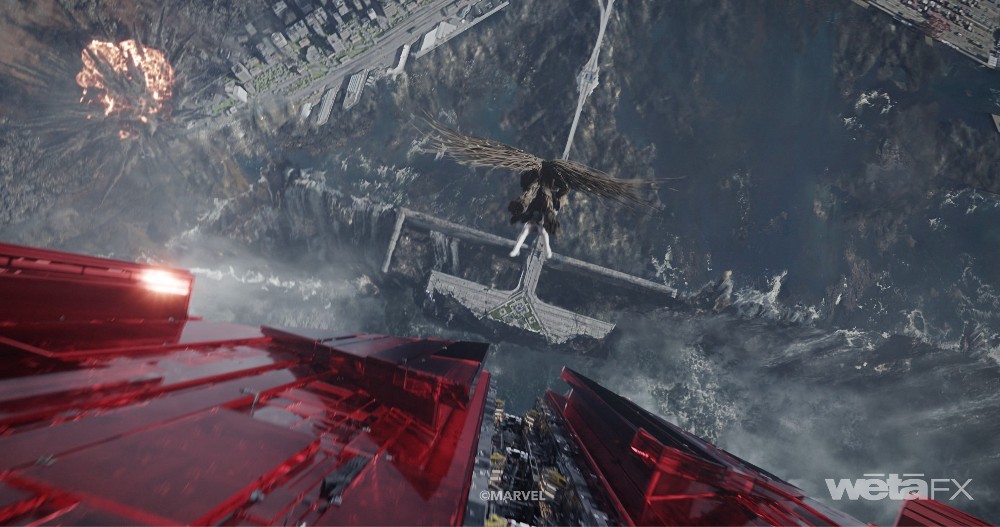
BTL: I know Weta didn’t do the animal stampede, but I was curious about what’s involved with sharing assets when Weta has built the Arete and the Abelisks, but another VFX house does the rest in a sequence. Are you talking directly to Framestore’s VFX supe and animation supe to work that out?
Williams: We did the shots leading up to the animal stampede, and we did the shots after the animal stampede. When Quill runs into the room and is trying to talk to the guards, trying to open up the forcefield, we did those shots, and then halfway through the stampede, when Quill is following the stampede, we actually did the shots where the kids were being passed over the gap, and then Framestore did the shots with the animals, and then we did the shots with Quill unsuccessfully exiting the Arete. Steph is the in-between, but words don’t suffice, so Steph encourages communication directly with all participants. We would just get on the phone and talk to Framestore directly. We’d make sure that we were in good communication with them through email, so that we were sharing assets. We talked about the fact that we built the environment, but then they punch a hole in the roof of the environment. So we had to make sure that we honored that hole. It’s a lot of back and forth, just make sure communication is good.
Just to add an aside to that, our industry, for whatever reason, as competitive as it might seem it is, is incredibly supportive of itself. It’s probably borne off the fact that everybody at every company worked at another company, and will work in another company. It’s just the way it is. It means that when it comes time to share or support, it’s not like, “Package it up and send it off to … “It’s more like send it off and then send an email saying, “Look, if there are any problems, give us a call,” and you hop on a phone. As you’re working on it later, you’re like, “Oh, we changed this. We need to make sure they know.” There’s a lot of very refreshing, in this day and age, support of all the various companies by the various companies. It’s heartening.
BTL: That’s great to here, but I get the impression that when anyone comes to Weta, they stay there forever.
Williams: Some of us have landed and not managed to figure out how to leave, not that we want to. I’ve been here for 25 years now — there are a few people like that – but we’re like every other company. We have our ebbs and flows, and it’s good for the industry to have that kind of cross-polenization, if you will. Somebody comes back and says, “Hey, I came up with this great way to solve this problem over there.” It stops us from being too inbred and stagnant in the gene pool of ideas. In a lot of ways, it’s good.
Guardians of the Galaxy, Vol. 3 is now streaming via Disney+.





